Questions After Reading What We Talk About When We Talk About Batman and Superman
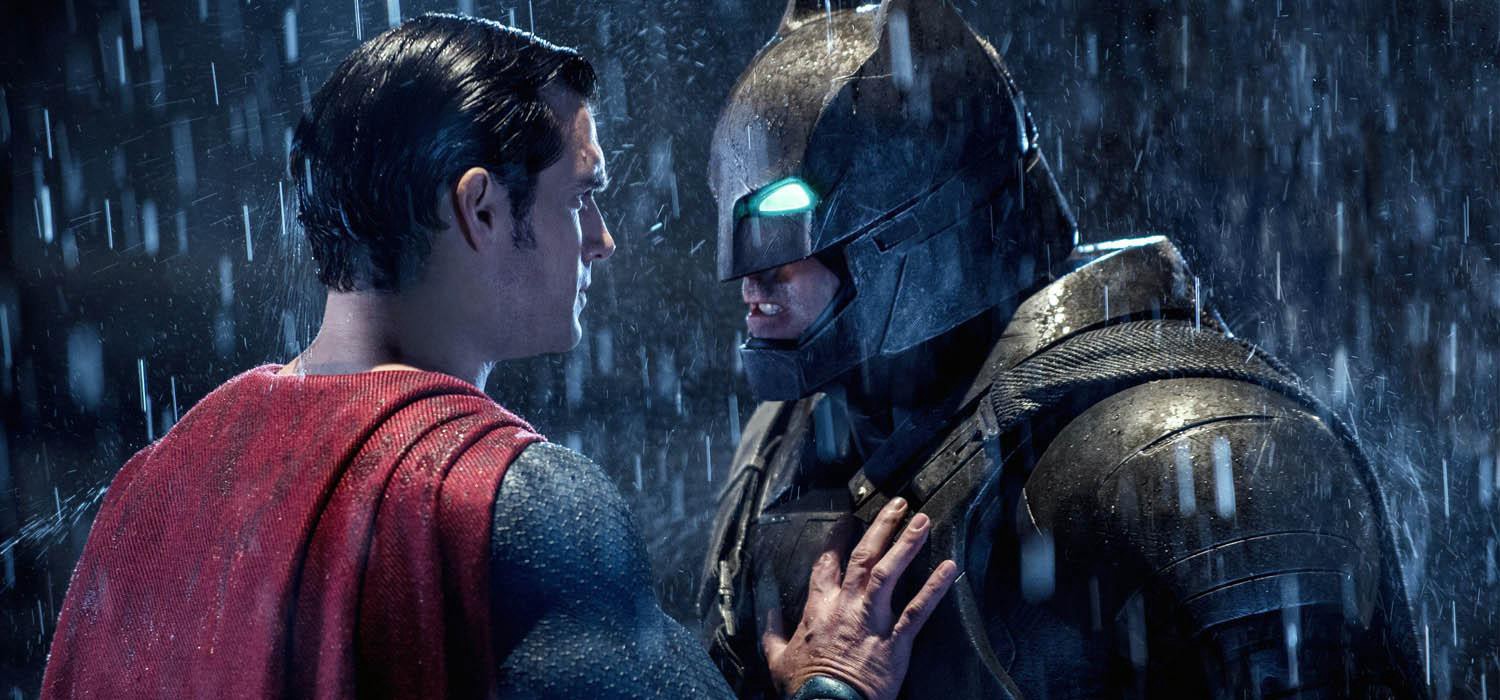
Information technology's been now four years since Batman Five Superman was released, and I'grand sure you lot still have some thoughts.
Major spoilers ahead for Batman V Superman: Dawn of Justice, Avengers: Endgame, Casablanca, The Godfather, The Lord of the Rings, Star Wars: The Last Jedi and Man of Steel. If you haven't seen whatever of these movies, you may skip alee the paragraph in which they are mentioned, every bit they are non essential viewing for the agreement of this piece (except for the Batman V Superman instance).
Batman V Superman: Dawn of Justice was released, believe it or not, March 25, 2016, so it's at present been four years since this movie premiered. Thus, I wanted to write a few words nearly this flick, because I really feel like nigh people do not show this movie the right level of appreciation – here'southward what I mean by that. I am not here to effort to defend this movie, neither am I to try to tear it apart. I think that virtually people do non give this moving picture the correct level of appreciation because most people say it'southward either garbage, or the best thing ever.
This piece is a collaboration between Alexander Newman and Miguel Fernández, and information technology was being written while Zack Snyder, the director of the motion-picture show, decided to brand a live commentary on his Vero business relationship, and touched upon some of the points that are mentioned in this article. You may check out the basic ideas he fabricated in his commentary here.
What I want to practise with this slice is to make a thorough exploration of why I call back neither argument is right, and why I think this is probably the best instance of why the Internet should terminate giving every blockbuster that comes out either a 0 or a ten, because most of the times, the truth lies somewhere in between. However, if you lot really believe this motion-picture show deserves either one of these grades, and you lot have a counter-argument for each one of my points, that's awesome! I hope you leave a comment and maybe I can larn something from you, the aforementioned mode I hope you learn something from me.
I want this piece to be a full give-and-take on pretty much every single detail that makes this movie work, and also not piece of work, then beware that y'all are in for a long ride. To warm up, let's brainstorm by making some full general points about what I recollect of the motion-picture show equally a whole, and then nosotros'll start to dive in.
As you can probably tell from what you lot have just read, my feelings on this motion-picture show are at the same fourth dimension very uncomplicated, and very complex. I think that there are bits of this particular story that piece of work great, and in that location are others that do non work simply as well, and at the stop, we have a non and so cohesive story that is really less than the sum of its parts.
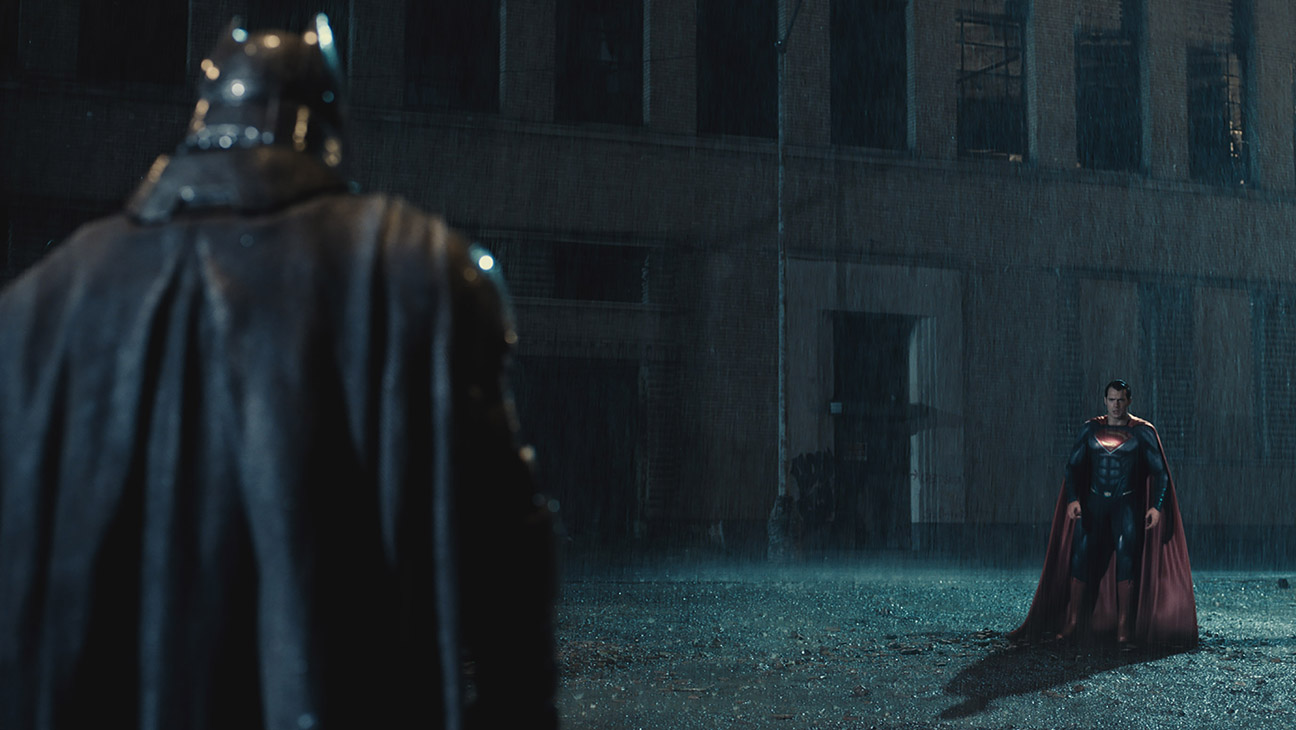
Before getting into the movie itself let'due south get into the trailer fiasco. I know it'due south piddling to mutter near a flick trailer and it is a common trope that they always reveal likewise much. Yet, for Batman v Superman, the tertiary trailer (after the teaser and Comic-Con released trailer) is peak 'studio trying to go anyone to come to see the pic by revealing as much every bit possible' that we tend to see in final trailers.
Most of the time these trailers air a week or two after release to bring wider audiences in and concenter second viewings (e.m. TV spots of Avengers: Endgame featuring a certain someone wielding a famous hammer). The BvS one was released on Jimmy Kimmel three months before the picture was released though.
Similar the picture itself, the first two-thirds cause no problems. We're treated to Clark Kent and Bruce Wayne discussing the concept of vigilante justice cut with shots of Batman'due south 'justice' and Superman'due south rescues. An interesting preview to the moral issues raised in the film itself (although fifty-fifty that spoils the entirety of the merely conversation in the movie between Kent and Wayne every bit men and not their alter-egos).
We then go some menacing Lex, insight into Batman's motivation behind his vendetta and to finish information technology off quick shots of the caped crusader fighting the human of steel. The kickoff two minutes are exactly what we want: set-upwardly and teases of the epic showdown everyone wants to run into.
This brings us to the 3rd and final minute of the trailer……this final infinitesimal. I'1000 struggling to express my frustration at it.
We get a shot of a body pocketbook with Lex'southward voiceover 'If man won't kill god', cut to the torso bag being open clearly showing Full general Zod'south body 'the devil volition do it'. This judgement alone heavily implies the spoiler that Batman won't kill Superman so Lex volition do something to impale him; to leave out any uncertainty we meet a bunch of sciency mutating shots and so the screech of the beast. If that wasn't enough nosotros're then actually shown the large bad, Doomsday.
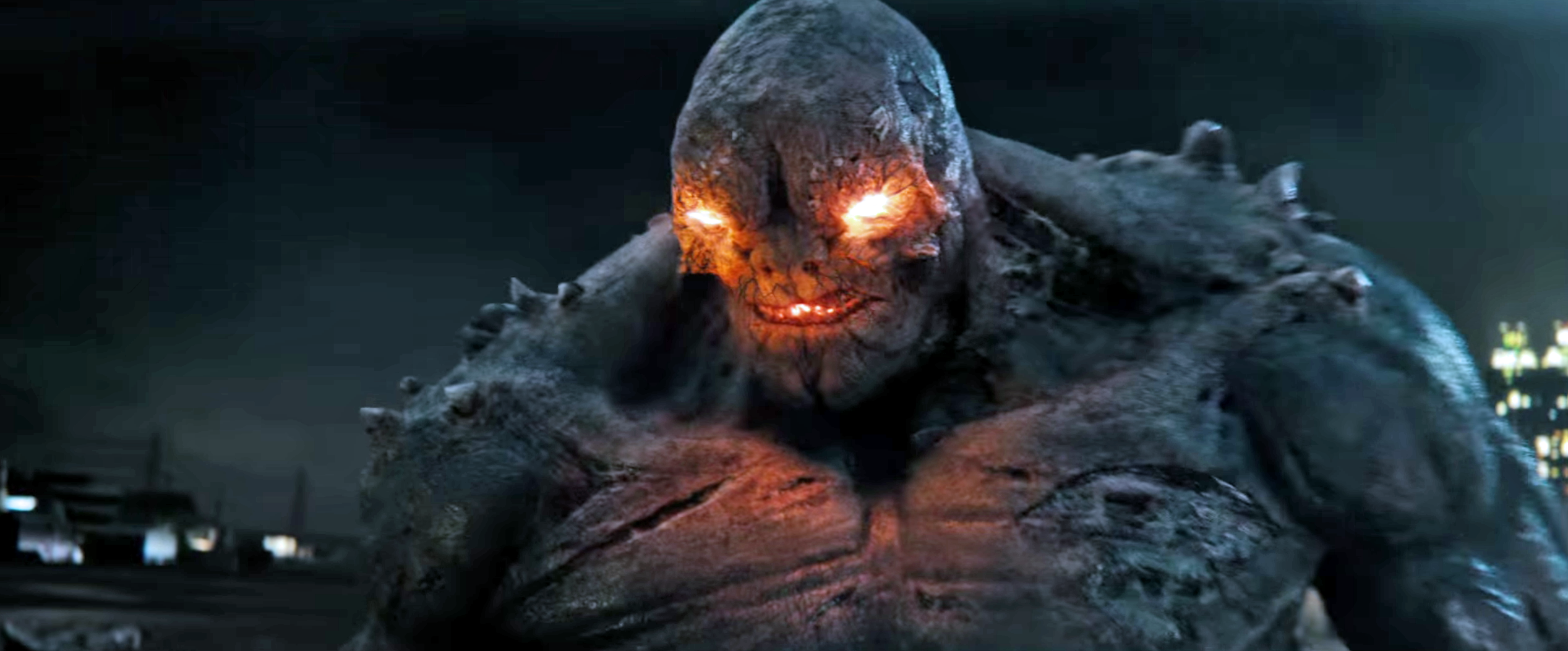
We all knew that neither Bats nor Supes was going to impale the other. The 2022 blockbuster wasn't going to end with Superman bending to Lex's volition and decapitating the bat. However, we didn't know how the fight was going to be resolved or structured but thanks to the trailer we're shown that the fight volition resolve and Lex will create the big bad from Full general Zod (keeping in mind that the Doomsday reveal is virtually 2 and a half hours into the runtime).
The final blast in this trailer's coffin comes in the form of the Wonder Woman reveal. Nosotros all knew she was in the movie and I understand the need to show her to bring in a wider audience; we didn't need to see the exact moment she enters the motion-picture show though (it'southward not the exact shot simply still a ane of her protecting Batman from a blast) and the ensuing exchange. Both of our title characters look at each other and say 'is she with yous?' 'I idea she was with you'.
So nosotros now know, how/when Wonder Woman enters, that she's an independent political party and that our other 2 heroes are on good enough terms to crack jokes.
Most of this would exist fine if it was deceptive editing, I honey it when the marketing campaign for a pic plays a role in the films reveals (e.g. Finn wielding the lightsaber in Star Wars: The Force Awakens posters, The Standard mandarin being the big bad of Fe Human iii in all the marketing). Unfortunately, for us, what nosotros go in the trailer is exactly every bit it is in the moving picture, meaning most of the film'due south biggest surprises are robbed from us earlier we're even got to the opening credits.
Finally, nosotros're treated with a shot of the iii protagonists continuing together, united against one threat. The final shot in a trailer for a film called Batman 5 Superman ends with them continuing together as allies.
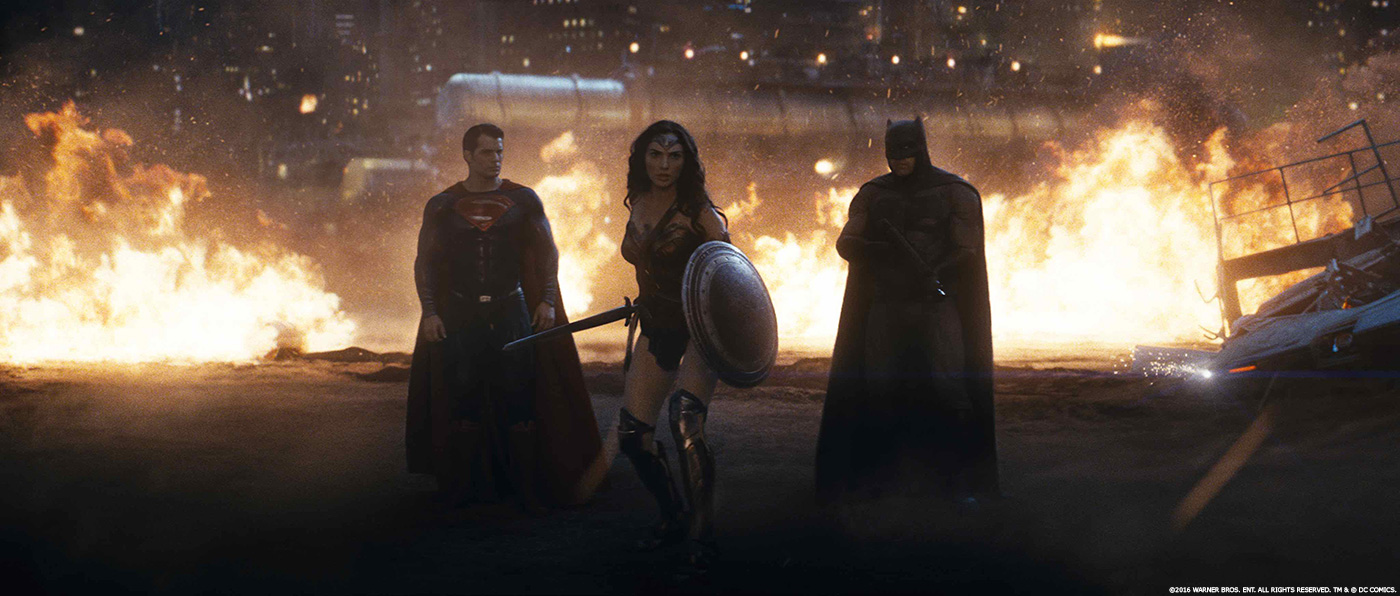
Let's get over to the film, giving information technology some context commencement. In 2013, Human of Steel, the picture show that introduced the world to Henry Cavill's Superman, also from Zack Snyder, was released. To me, that was a picture show that worked fine for the beginning two acts, in which it tried to give u.s. a reason to care near Superman past trying in several means to humanize him, make him relatable. The struggle he is feeling is repeated over and over again throughout the course of the motion-picture show – does he belong to this Earth? During the first seventy minutes of the motion-picture show, give or take, Clark wanders around asking himself what is the right thing to practise and all that stuff.
I think the idea behind this story is pretty cool – Clark Kent is an alien, an outsider, and he is getting the gamble to defend the planet in which he was raised from people who desire to convert that planet into the one in which he was born. That could enhance some interesting character questions about humanity, what makes an action exist right, or what makes a man be good. Also, some questions about nationality and what does it mean to be born in a place vs. caring most the people that reside there.
Here's the fox. The moving picture tried to set up some of these questions in the first 60-75 minutes, but then by and large forgets to respond them and makes what could take been a pretty interesting summertime blockbuster into another CGI mess with two people punching each other in the middle of the air. Sure, that fight ended with Superman having to make a choice (nosotros will explain later on why that is important), just even that felt pretty hollow because the set up wasn't strong enough, and past that point, we had spent around 20 minutes watching 2 CGI figures do some shit to each other.
At the end of the motion-picture show, Metropolis was mostly destroyed as a issue of the fight betwixt Clark and Zod, which leads the states directly into BvS, with Bruce Wayne getting to Urban center while this fight is going on and watching his own building fall downward as a result of those ii aliens fighting in the sky with no regard for human life downwardly in that location. As a consequence, Batman starts to develop some feelings about that alien in the heaven and prepares for a solar day in which he might have to face up him, when eventually he turns against the globe. Thus, he tries to steal the i weapon that could wound him.
As for Superman, he is out at that place watching Tv where some people accuse him of killing innocents when trying to salve lives. Enter Lex Luthor, who has a programme to make these two vigilantes fight and is manipulating all the strings behind, with no i noticing. The plan succeeds to the bespeak in which both of them fight, just the fight did not plough out the style he hoped, and the moving picture ends with Batman, Superman and Wonder Woman fighting a monster made in an alien lab just considering Lex Luthor was bored.
Now that we all remember nearly of what happened in the movie, let's start to dive in. First of all, every bit I have already mentioned, this picture is great in some aspects, but not that skilful in others. For example, most of the Batman stuff up until the 3rd act, works pretty well. I can't say the same about the Superman storyline, and I feel similar the main trouble behind that was actually Lex Luthor, who is the ultimate villain of the film, and that didn't work either for me.
There is a phrase that is commonly thrown around, and most of the time I hate to hear, but I call up that information technology applies hither very well: that flick tried to practice too much. Well, first of all, some of the greatest movies of all fourth dimension tried to do as well much. The Godfather, anyone? That motion-picture show had to set an entire family unit, not only with each member just also with their spouses. It needed to introduce us to a whole new world of the mafia, in which some people are as of import equally a President. It also had to fix up all the villains of the film, and halfway through it goes on a sidequest with the adventures of Michael Corleone in Sicily. The finish result? Well, it changed movie history.
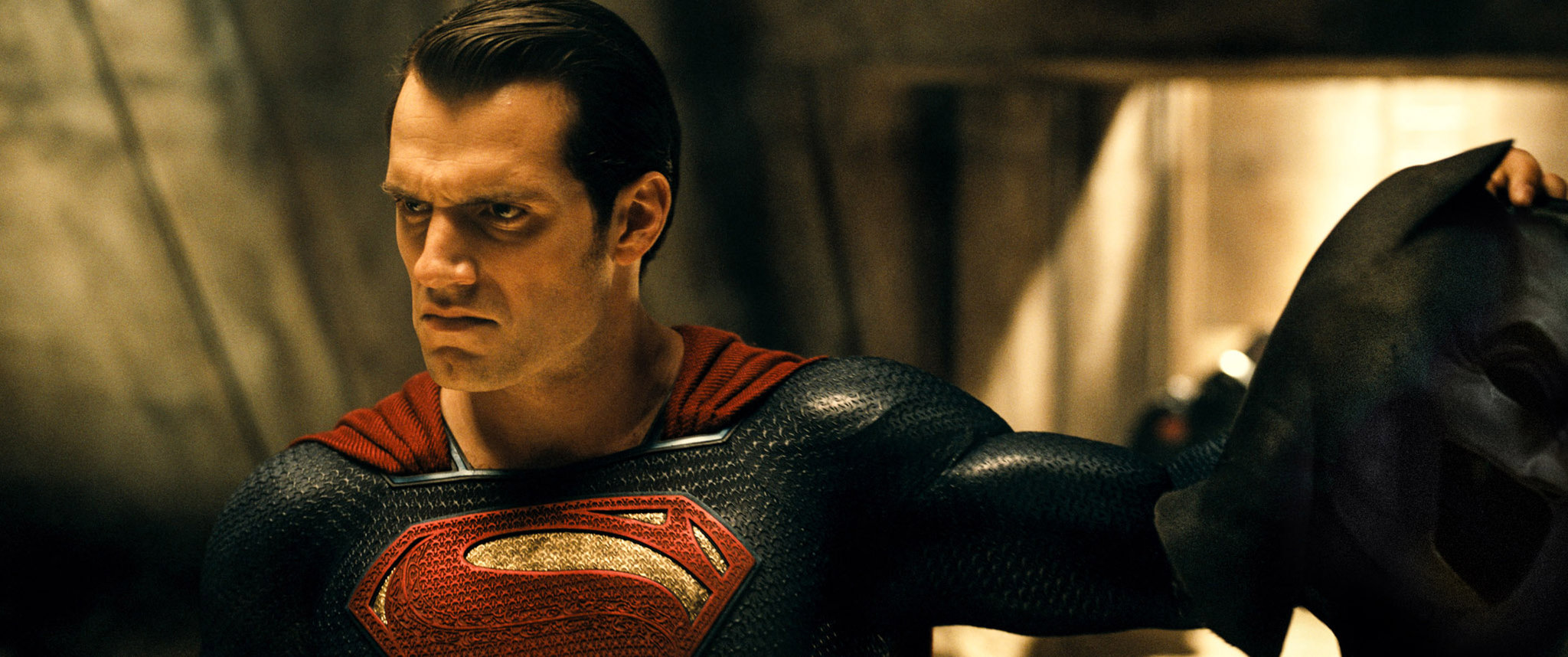
What I am trying to say is that a motion-picture show trying to do too much is not necessarily bad, as long as it succeeds in what information technology is trying to accomplish. Now, let'south look at BvS. From the commencement, this flick had 3 jobs, at to the lowest degree from the championship: it must set up Batman in this world, information technology must contextualize Superman in a post-Man of Steel world, and it must brand them face each other. Seems simple right?
Probably not that much, but the fact of the matter is that from the very first stages of the development procedure, the film tried to do much more. The writers and the director, because of studio orders or because they liked the ideas, decided to besides introduce Lex Luthor and brand him the homo behind the curtain, make Lois Lane relevant in terms of screentime (but perchance not so much in terms of story? Nosotros'll come across) with an entire subplot in which she is investigating some bullet, innovate Wonder Woman, force Doomsday into the plot equally the bigger threat our two title roles will take to face to show they are friends now (which only causes less screentime for the story pre-fight to develop), introduce a whole political subplot with Holly Hunter, and even try to introduce the Justice League through insignificant 3-second cameos, but whose entire subplot added up a lot of time at the terminate of the day.
Nevertheless, at this signal, I must reiterate that had the movie succeeded in at least well-nigh of these subplots, I wouldn't be lament that the movie tried to do too much. Because of that, I tend not to be besides critical of that, merely rather to expect more deeply into what exactly went wrong.
Any slice of writing on this film is undoubtedly going to feature a Martha sized amount of issues and criticism so it's worth noting a lot of things the flick gets right. On re-scout for this article (I watched the ultimate edition with the extended scenes) I establish myself enjoying a lot more of the film than I'd recalled in the theatres (arguably because of said extended scenes).
The idea of showing Bruce Wayne's parents getting shot again tin feel a bit like flogging an extremely depressing dead horse, and I was a bit against the idea. We're given this scene during the intro however, so as not to draw from the master narrative, and because the moving picture itself leans heavily on parental figures, it is simply plumbing equipment to relate direct to this Batman'southward pain.
The pearl necklace visual is too one motif of the Batman origin story I've always liked. The instant connexion to Bruce'southward female parent. So seeing it go broken apart by the gun that kills, while dramatic, fits with the film's very slow visual style.
The commencement two hours of the film are actually rather well synthetic. Spring-boarding off of 2013's Man of Steel and using the huge collateral damage caused in the film equally a betoken of contention for both Batman's effect with Superman and the general public's turning indicate is a corking opener.
Henry Cavill continues to prove himself worthy as Superman, expressing the character's continued pain and frustration at existence rejected by the people, especially considering the character has but 49 lines in the entire movie.
Our introduction to Batman holds a nice scrap of Juxtaposition, we see the senate hearing with the woman from Nairomi (a fictional country) criticizing Superman. 'He'll never answer to you, He answers to no ane, non even, I call back, to God'.
Cut to the Gotham police investigating a business firm and finding a group of girls in a cage proverb, 'He saved us. A Devil'. We then see Batman has branded someone with his symbol and demonically escape across the ceiling. Snyder uses a lot of religious visuals/references in the motion picture and plays with the thought that Superman is a God and that Batman (and afterwards into the film, Doomsday) are the Devil.
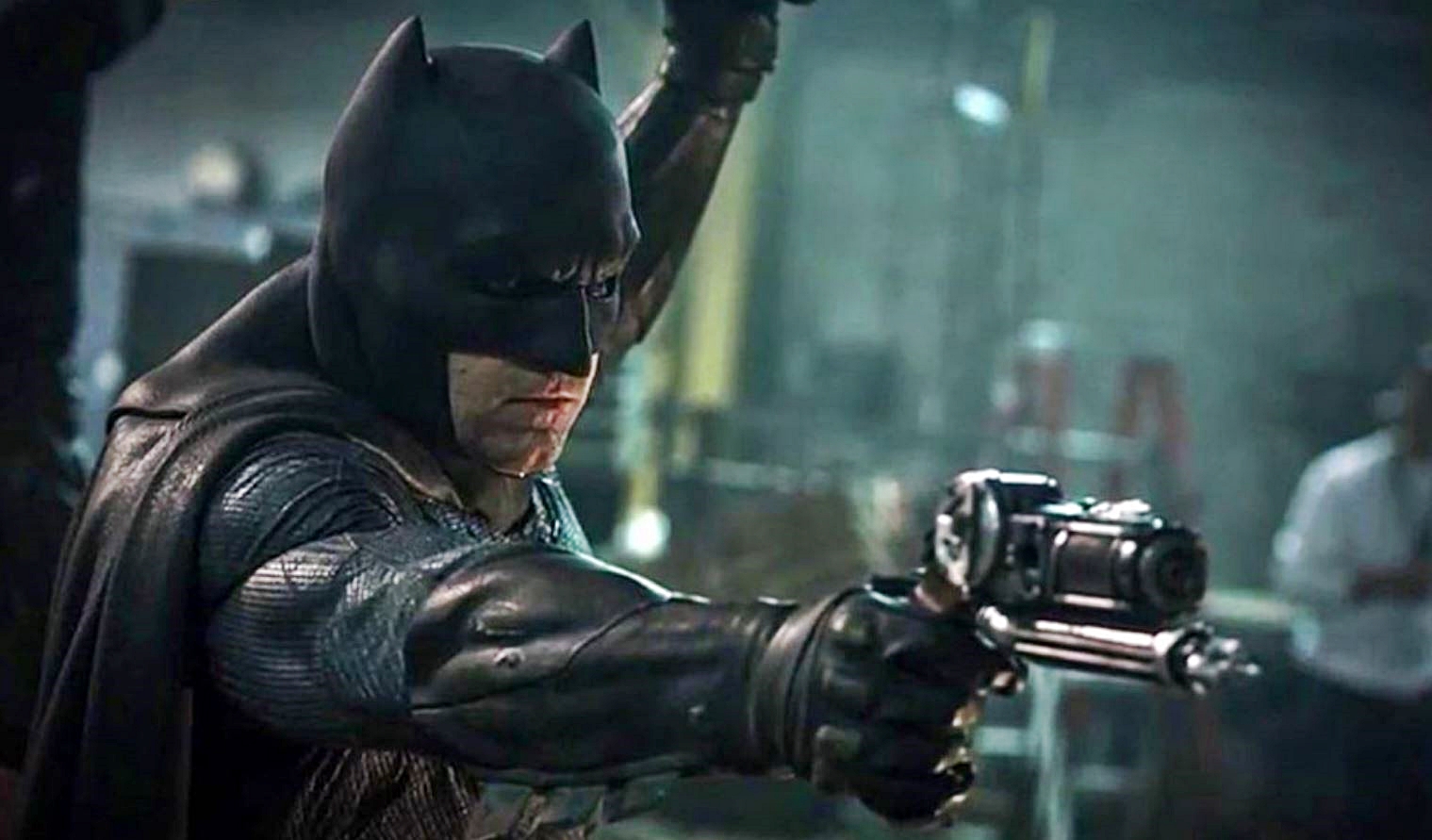
Throughout this piece, I will be arguing that BvS has some peachy ideas on the surface, only just fails to execute most of them, and thus does not attain the potential that those ideas contain. Let's give an example of a peachy idea that panned out pretty good, and ane that didn't.
We'll start with the positive: let'south say yous are planning a movie in which Batman is going to see Superman, and ultimately because of a difference in points of view, they are going to fight. And as well, y'all are building this story upon the shoulders of what happened in Man of Steel. To accept Batman detest Superman because he holds him responsible for what happened to Metropolis, and to bear witness that by starting the motion-picture show with that end sequence of Human being of Steel from the perspective of the ground, is actually a bully idea, and that panned out cracking for Batman's motivations, every bit we'll meet subsequently.
Now, allow'south say that you are also planning that down the line, after you have released your new project chosen Batman Five Superman, you desire to make a Justice League motion picture (just the mention of that project imposes some kind of respect and admiration, at least to me). What an awesome idea to introduce the premise of a team of superheroes in the first motion-picture show of your universe that is going to take two superheroes meeting each other! I am not talking most having the final battle include the six/seven members of the team, whether you wanted to add Green Lantern or not, but to start to introduce but the idea of forming a squad. Hither is what you don't do: y'all do not spend effectually x minutes of this film setting up a subplot between Bruce and Diana that will climax in her reading a freaking electronic mail.
John Truby states in his book The Anatomy of Story: 22 Steps to Becoming a Principal Storyteller that every story has a minimum of seven steps in its growth, that will organically appear as the story starts to develop itself (yous are able to preview this book following this link). If a story successfully checks all these boxes and also manages to exercise so in a fluid mode, that is, the writer does non force them into the plot, but rather they prove upwards every bit the story unfolds itself. This will go clear in a minute.
Also, there is a piece out there written by Film Crit Hulk on why Man Of Steel fails to develop whatsoever blazon of dramatization for his main character, and argues that, as a general rule of thumb, for a story to be cohesive and competent, it must answer vii key questions of narrative drama (link here). In this piece we volition try to explore how Batman 5 Superman checks or does not check Truby'due south seven steps, and answers or fails to answer Film Crit Hulk's seven questions. We shall come across that these ii systems exercise not differ from each other a lot.
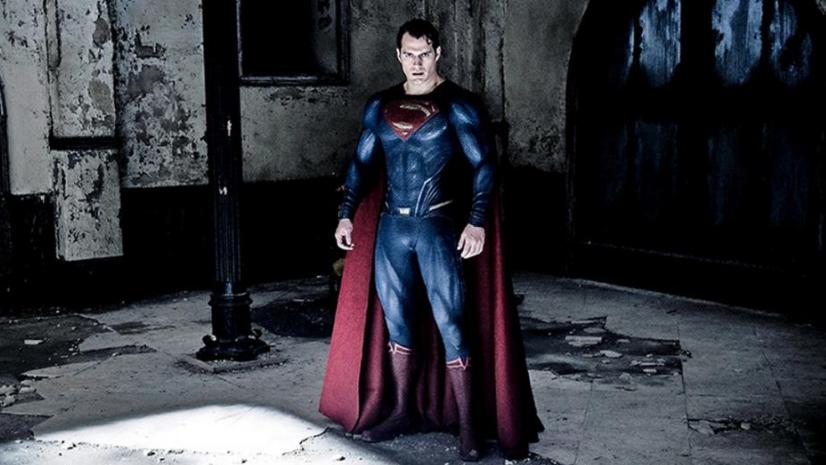
1 – Weakness and want
Truby describes the hero'southward weakness as the affair that is property him back throughout our story, "something is missing inside him that is so profound, information technology is ruining his life". He also leaves the door open for a character to take more than one weakness.
With that definition, one could immediately jump to say that Batman's weakness is his parents' death as a child, and how that has haunted him since. I would argue instead that that is Bruce'southward weakness which led him to becoming The Batman. Batman'southward weakness throughout this story is that he has become the thing that he set out to eliminate many years agone. He literally says to Alfred in one of the all-time scenes of the movie: "20 years in Gotham, Alfred, we've seen what promises are worth. How many good guys are left? How many stayed that mode?"
I don't think he is talking about himself, or at least he doesn't think he is talking about himself, but combined with the style he fights (brutally, doesn't care how many wounded/dead bad guys left) gives usa this character'south weakness. And both weaknesses run into in the key scene of the moving picture, the "Martha" scene, which we'll get to later on. Zack Snyder really put this well when he stated that he has go Joe Chill (his parent killer) considering he volition have no problem in destroying a family if that is what needs to exist done.
We'll introduce the idea of want earlier we move on to Superman, considering there'due south a lot to unfold at that place. For this concept, I prefer the equivalent dramatic question that Film Crit Hulk proposes: What does this character need? As Truby states, "The need is what the hero must fulfill within himself in order to have a meliorate life. It ordinarily involves overcoming his weakness and irresolute, or growing, in some way".
He also goes on to differentiate betwixt psychological need, which involves hurting nobody but the hero, and moral need, which is built upon the psychological need, and involves overcoming a moral flaw and learning how to act properly toward people. Moral needs imply hurting other people. It actually looks like Truby wrote those words thinking about Batman in BvS, or the writers copied and pasted that line into their drafts: Batman needs to come back to exist a man, and start to differentiate who is good and who is bad (become dorsum and not be Joe Chill). He needs to realize that Superman is not going to wipe out the entire human race.
It's easy for us as viewers of other Batman movies and comics to bring our own expectations into this story, and impose that Batman doesn't kill, but nosotros must call up that that moral code was never stated in the movie as beingness a role of this iteration of the caped crusader, and then, I recall in that location is a sparse line between what the movie is proverb and what we Batman experts recall it is saying.
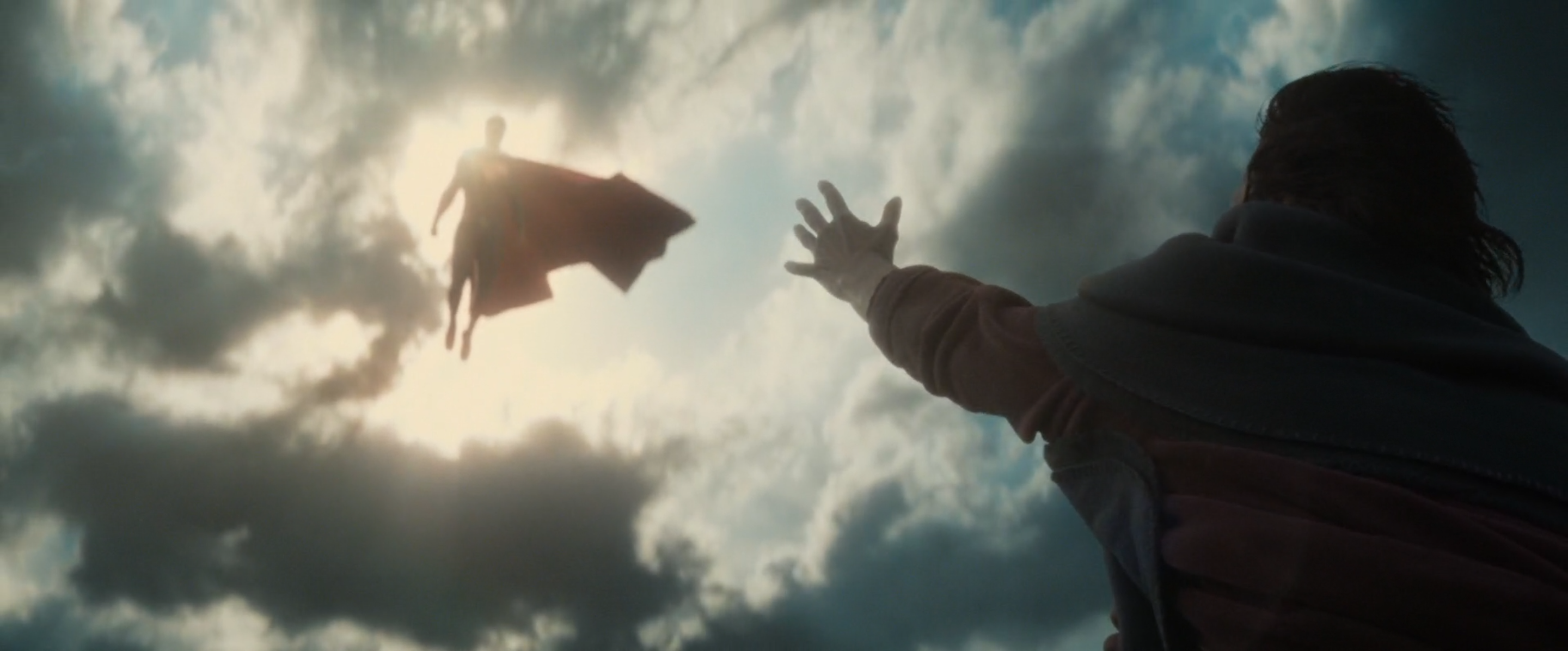
Let's move on now to Superman, because this is where it gets complicated. What is his weakness in this story? And I'm not talking nigh kryptonite, but rather what is the matter that is holding him back throughout the course of the story?
Superman in this story to me, is a very basic, simply likewise profound, problem. In that location is a very mutual phrase used to depict the art of storytelling, and that is that choices reveal grapheme. Information technology'due south simple: when a character is faced with a choice, he reveals something when he (or she, but we'll keep it male person equally we're relating it to Superman) makes a conclusion.
Let'south take Casablanca, containing i of the greatest examples of this, considering of its simplicity and its importance. At the terminate of the film, Rick decides to risk his life and send Ilsa and Victor Laszlo abroad, and thus accepting the reality that the past is in the past ("We'll always have Paris"). This reveals graphic symbol, not only considering of what he does, but also because of what he could have washed but chose not to.
In that location are two types of characters in stories (I'chiliad oversimplifying but follow me here): there are characters who act, and characters who react. When he made that choice, Rick decided to act. Superman in BvS, however, simply reacts to things that happen around him, or to him, and thus reveals basically no character throughout the movie.
At the beginning of the moving picture, Lois Lane is in danger, Superman reacts to that past saving her. Yous may be maxim correct now: "but hey, that is acting right? He acted by going down at that place and rescuing her." I admit there is a bit of a grey area in between the two terms, only when a character acts, or makes a choice (a character choice), he is deciding between 2 paths. One that follows the aforementioned ideals he's been holding for the entirety of the story, and i that will imply changing him.
It does not necessarily hateful to choose the path of alter, for example, Rey is offered a new path in Star Wars: The Terminal Jedi and chose not to accept information technology, revealing character. Superman choosing to save people (especially those he loves) reveals nothing nosotros don't already know about the character.
Getting to that village is non action just reaction – he saw or heard or noticed that something was going on with Lois and reacted. This happens multiple times throughout the motion-picture show. The Senate hearing scene, it could be argued that past showing upward, he made a option. Zack Snyder fifty-fifty stated that past doing that, Superman is being more hopeful in united states of america than even we humans would be, and that he believes that the truth will come out.
That certainly reveals character, only that'south Snyder's director's commentary, not the actual film. There was never a scene between Lois and Clark in which the latter said he believed in the truth, and that this one would come out. Instead, Superman showing upward is seen equally a reaction to the news reports he'southward been watching for some time and his being summoned to appear.
Then I'm saying that information technology'southward pretty easy to find something property Superman dorsum, and the virtually likely candidate would be his unapologetic dearest for humanity, just does this aid define what the character needs? Information technology does: for example, he needs to realize that humanity will disappoint him, and as well needs to be ready for that. The consequence is that the movie refuses to define or explore it. Too, this is more a psychological need, than a moral 1, which according to Truby, will make your story weaker.
Nevertheless, in typical BvS fashion, the writers actually came upwardly with a great idea for a moral need: he needs to realize that when trying to save some people, others may be hurt (you lot can't save anybody). They even gave this moral demand a resolution, when he somewhen sacrifices himself for humanity.
The problem is that this is never explored from Superman's perspective because when the world blames Superman for killing innocent people, he didn't even practice it, it was all a large fix-upwardly. And when he actually was responsible for innocent lives, while fighting Zod, he never is faced with that problem in the picture show. That only serves as character motivation for Batman.
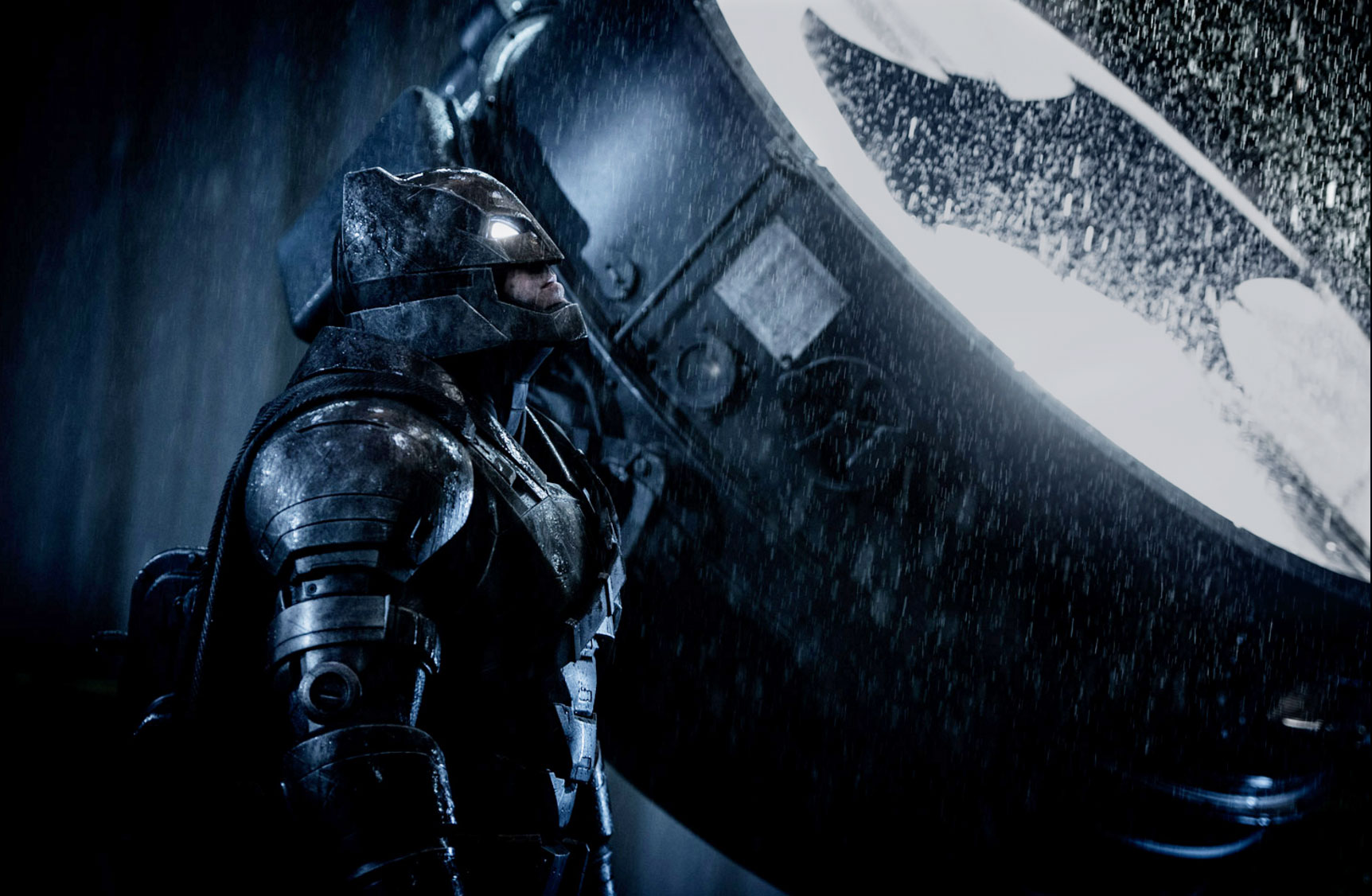
2 – Desire
The second key stride is the want, or its equivalent question: What does the hero want? This will gear up our graphic symbol'southward main goal for the story. For example, in The Lord of the Rings, Frodo wants to take The One Ring to Mount Doom. That is his want, but this is different from his need, which would be to overcome the influence of the Band. Notice the difference: the need is about overcoming the weakness, but the want is the goal that motivates his actions and that will ultimately lead to him fulfilling his need.
In most stories, when the character fulfills his goal, he likewise overcomes his weakness (Frodo's case is a bit more complex, as he doesn't overcome the Band's influence until he gets on the boat in the Grey Havens).
In BvS, Batman wants to be prepared for what could happen if Superman turns bad, and that ultimately leads to confrontation later on Superman stops Batman chasing after the kryptonite. Pretty simple: in a movie chosen Batman Five Superman, Batman wants to fight Superman.
On the other side of the spectrum, what is Superman's desire? This is when the whole thing we stated before about Superman reacting and not acting becomes relevant, because in that location is not a particular goal he tries to accomplish in the narrative. 1 could say, well he wants to become someone who people look upwardly to as a source of what is good in this globe, as a moral compass. Only how does that differentiate him in this particular story from what Superman wants to practice any other twenty-four hours of his life?
The ultimate example of Superman being purely reactionary, and not making decisions of his own, is Lex Luthor having to kidnap his mum and so that the plot can move on and he can fight Batman. The writers put him in a position in which he has no other choice merely to go to where Batman is and try to convince him to cooperate. In a movie chosen Batman V Superman, Superman doesn't fifty-fifty want to fight Batman.
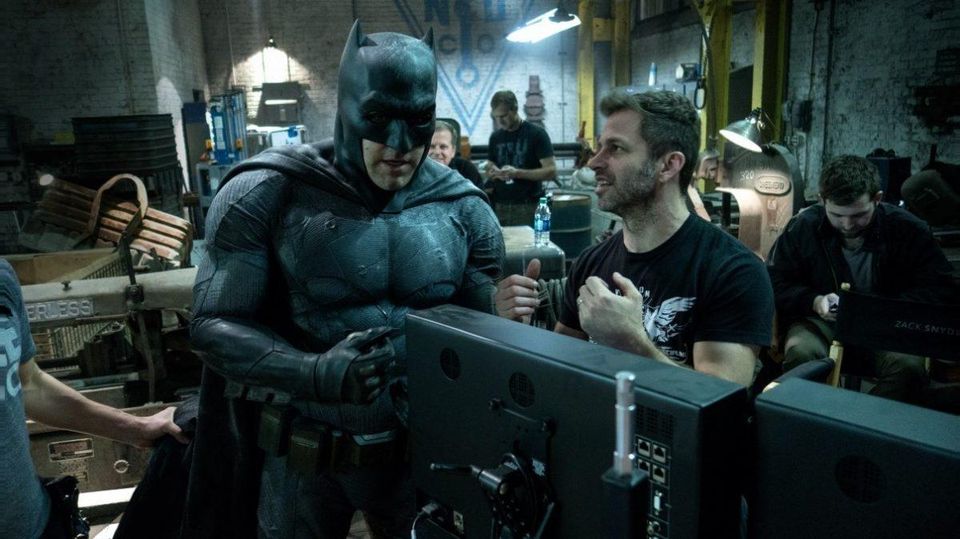
Once nosotros've tried to reply ii of the seven questions, we tin move on to the 3rd one earlier we get to cardinal signal #3 (I know it's a flake confusing but follow me for a second).
Question #3 of narrative drama is the following: How exercise those wants and needs conflict with each other within the graphic symbol? In other words, what is the internal conflict of the grapheme? To follow with the Frodo example, if he doesn't overcome the difficulties presented by the Band (his need), he won't be able to destroy it (his want).
In BvS, Batman's internal conflict does not show upward until the end of the fight, with the Martha scene, which again, nosotros'll talk about subsequently. Rather his want and his demand practice not conflict within himself, because Alfred is the very representation of the conflict. He is the one trying to convince Batman that maybe Superman is non that bad and that he is crossing the line. He has become his moral compass.
Superman, on the other hand, has pretty much no internal disharmonize. Certain, at some point in the film, he 2nd-guesses himself and starts to doubt the world is seeing him as a sign of hope, but rather as an alien who ultimately means no skillful. But here's the problem with that: that internal conflict appears in that scene with Lois in the balcony, only doesn't prove up again. The next fourth dimension he appears on screen is to save Lois (reaction) then to become and fight Batman (another reaction).
Simply even worse is that his supposed internal conflict is only based on a misunderstanding, a set-upwards past the villain to brand the world look at him a certain fashion, but it is not acquired by something he did wrong. There's likewise a line in that scene with Lois after the Capitol explosion in which he says "I'm agape I didn't run across it because I wasn't looking." That is one of the very few times in the flick in which Clark shows some kind of struggle, but even that turns out to be a misdirection, as we later find out that he couldn't have seen it anyhow. It is only an excuse to make him sad for a while.
At this indicate, we can even answer dramatic question #4: How do these wants and needs disharmonize with the outside world? In Batman'south instance, it is pretty easy. He kills a agglomeration of dudes.
Simply what about Superman? Here lies some other problem for him, because the movie doesn't answer this question, only rather the opposite, what is the conflict that the outside world has with Superman? That is embodied by the whole political subplot with Holly Hunter which tries to show different perspectives, particularly in a scene involving several talk-bear witness hosts and politicians speaking about this. "Must there be a Superman?" is a question thrown around.
In that sequence, in that location are several questions thrown around that would accept made for a very interesting story, just that never actually comes to fruition, equally the flick never answers any of them. Also, there'southward the perspective seen in Mexico as Superman saves a child from a burning building, showing that there is likewise a role of the world who still see him as a savior, but over again, nothing much comes of it.
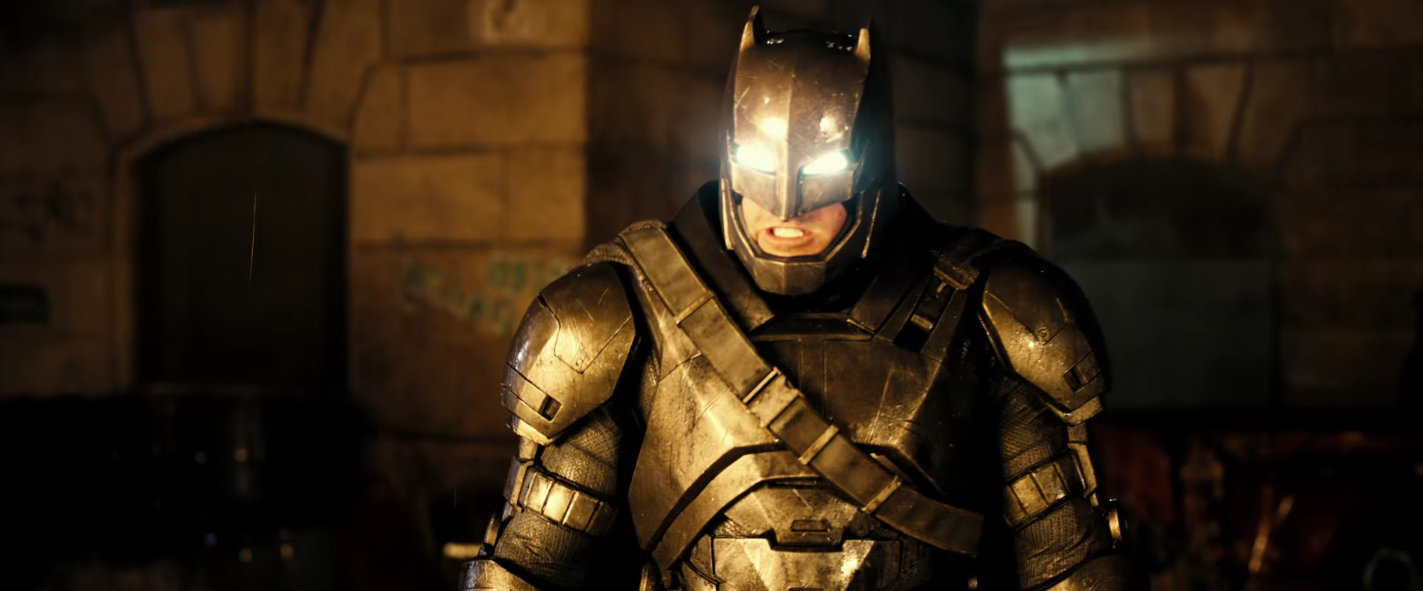
3 – Opponent
Truby defines the opponent every bit the graphic symbol who is competing with the hero to achieve the same goal. He states a general rule of pollex to notice out who our opponent will exist: you should offset with the hero'due south principal goal, and whoever is stopping him from getting it, is your opponent. For example, in Star Wars, Darth Vader is Luke's opponent, and they fight over who will command the Universe, the Empire or the rebels.
Notice that this definition does not imply that your opponent is necessarily the embodiment of evil (even if they are) in your story. For case, in The Godfather, Sollozzo or Barzini are no more evil than the Corleone family, they just confront each other over who will control New York City.
The clear villain of BvS is Lex Luthor, merely not because the premise incites that, just rather considering the plot inserts him every bit a way of making Superman not look evil when he somewhen fights Batman. Here is what I mean.
The premise of the movie is very elementary: Batman and Superman will face each other because of disagreements with the methods employed by the other guy when trying to do justice. I admit, it's ambiguous in the Batman part because he just has a key disagreement with Superman's being, but allow'due south coil with it.
My point is that there is no place for Lex Luthor in that premise, just he is forced into the plot because the writers didn't want Superman to look like the bad guy for fighting Batman. In other words, they couldn't give Superman a character reason to fight Batman, and so they had to requite him a plot reason. Yes, Clark Kent did receive some photos and started investigating what The Batman was doing in Gotham, but that only served for him to exist aware of Batman's presence, and they didn't develop it to be the reason why he would fight Batman.
I have several issues here. First of all, why hasn't anybody outside Gotham heard of Batman? I am not basing this question on any lore beyond the telescopic of this picture, considering we are talking about a metropolis that is the embodiment of crime (suggested by the film) having a masked vigilante who has been fighting criminals for the by 20 years (stated in the film).
2nd of all, when the writers put Lex into the plot, they don't put him equally the opponent for either character, but rather as the man pulling the strings for some weird reason. He is definitely non the opponent of Superman, because they are fighting for reverse things.
Lex wants to bear witness a bespeak: he wants to show the world that God can either be all-good or all-powerful. He literally says that in the film. In doing that, Luthor aspires to get some kind of God and that's why he created Doomsday, because he hates God and believes he is doing things wrong.
To prove his point, he takes the physical representation of God in his world and puts him in a challenge: he tin either kill a human (then, he wouldn't exist all-adept) or exist killed by a homo (so he wouldn't be all-powerful). It really becomes distracting how many biblical references there are throughout the entire film, quite honestly, specially when they're not consequent and make Lex'due south motivations disruptive to the audition.
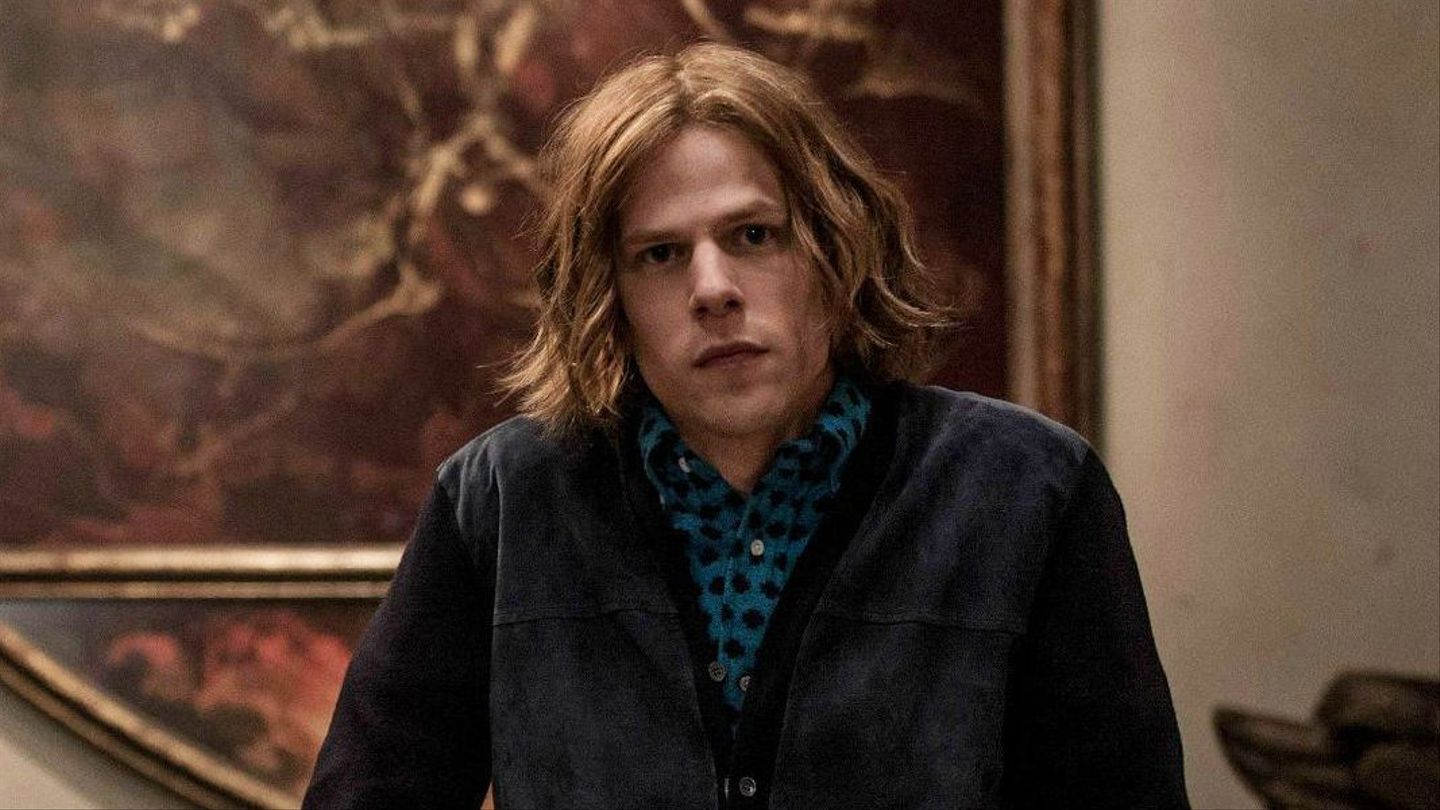
Personally, I don't really mind Jesse Eisenberg's interpretation of the grapheme. It does get annoying afterwards a while, but he is pretty interesting. This is one of those other things in this film that I recall was a corking initial idea, but maybe could have been executed better. I love the thought of Lex Luthor being way more intelligent than any other person around him, and actually showing that, by making him speak very fast and expecting everybody (including the audience) to go on up.
Just the idea of making him the guy who sets up the fight does non work, for ii main reasons. Showtime of all, information technology makes the movie plot-centric instead of character-centric. The basic departure is as follows: the driving force of your film will either exist the plot or the characters. Ideally, you would have your characters move your story forward, considering that's what makes the story more relatable and it also flows better and feels more cohesive.
An example would be Star Wars: we kickoff off with the Empire boarding the rebels ship, and we follow two droids who will somewhen see Luke, who volition accept the baton of the story from there, and motion it forrard until the end of the picture show.
Batman V Superman is an example of a plot-axial movie, considering to tell the story it wants to tell, uses a lot of plot-points and less organic characters who interact with each other, and Lex Luthor is the one providing all those plot-points that are thrown at the face of our characters.
To empathize this, take a scene in the motion picture, think of what is happening and why is that happening, that is, what previous scene had as a consequence what is going on in this one, and reiterate this process until yous either get to a scene in which you can't go back whatever farther because the characters are reacting to something that happened off-screen that wasn't shown previously (plot-centric), or you have gotten to the commencement of your story (story/character-axial), the inciting incident. Of form, this has exceptions (e.g. not-linear storytelling).
Accept the Capitol scene in which Superman shows up from the heaven. Why did he show upwards? At that place was a previous scene in which Holly Hunter chosen him out to answer for his alleged crimes. Why did she do that? There are two answers: ane, is Scoot McNairy proverb he would like to testify, but why? He was convinced past Lex Luthor. Why did Lex Luthor want him to evidence? The answer: plot. We learn later that he wanted to innovate a bomb and covered information technology in Lead then that Superman wouldn't see it.
The other answer is the testimony of the woman from the Africa village, who is there to say that Superman killed innocents in Africa. Why is she there? When we go to the Capitol scene, nosotros already know that Lex plotted it out so that his soldiers would kill the villagers to endeavor to incriminate Superman. The answer is again, plot.
With all of this, I don't mean that character-centric = greatness and plot-axial = failure. Some of our greatest movies ever are examples of a mixture of both, and probably the all-time example of that would be The Lord of the Rings, which contains a lot of plot, but its story is mainly driven by the actions of its characters.
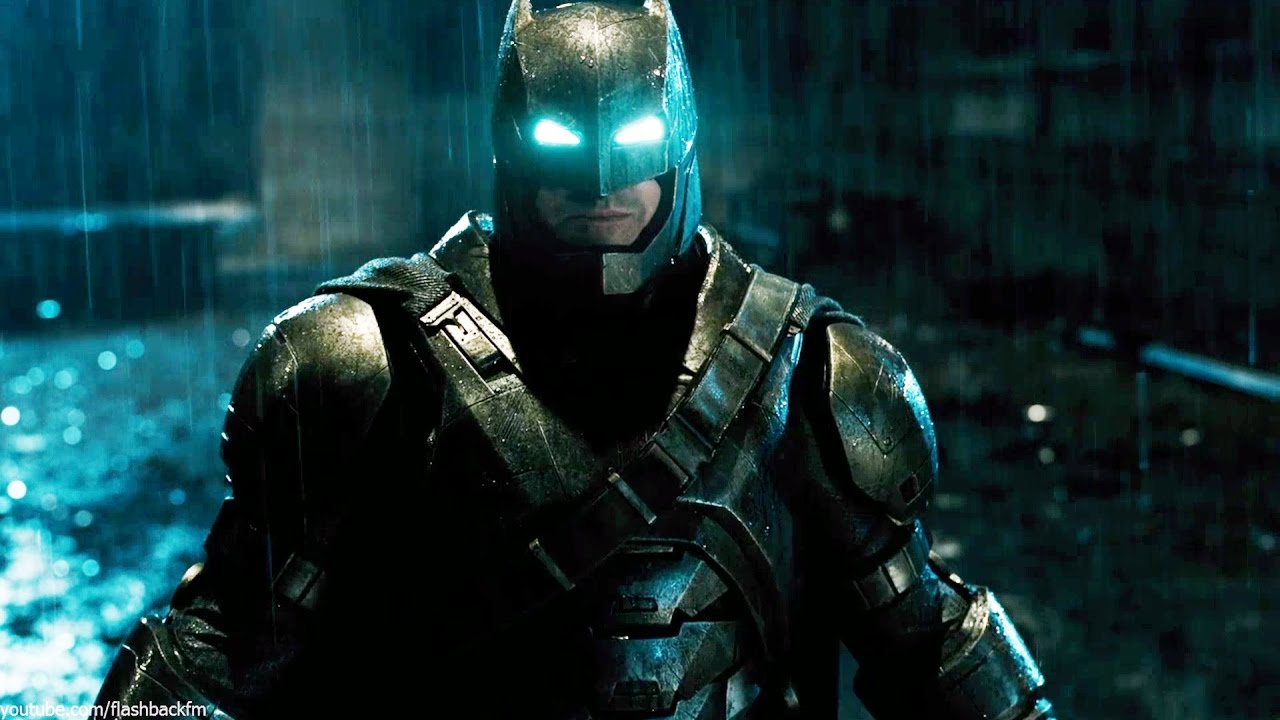
BvS not only has too much plot, only I think that the worst thing is that its plot is way likewise complicated. Lex Luthor spends around 80 minutes setting up a plan in which he tries to incriminate Superman and brand him look bad to the unabridged world. Merely eventually, that doesn't even resolve, because the very adjacent thing we come across the earth react to something Superman-related is at the end of the motion-picture show when they all respect him. We didn't even become to meet the transition, we just imagine it.
And then all that plot becomes mostly useless in the 1000 scheme of things, and and then the writers need to invent another plotline to make Superman fight Batman. The inverse reaction from the world to Superman between the bombing and Superman's funeral could be the President giving the light-green lite to killing both Superman and Doomsday, generating sympathy and respect for him. That's all conjecture though, and happens off screen, making it meaningless for united states equally viewers.
Before we movement on, we can respond question #5: How practice these wants and needs conflict with other characters? In Batman's case, there are two sides of the spectrum. On the "good" side, we accept Alfred, who is constantly reminding him that he should not act this way and that he is throwing his life away. Sometimes in a more than subtle way, sometimes directly in his face, like in that bully scene in which Batman reveals the truth behind the White Portuguese: "You lot are gonna go to state of war", "He is not our enemy", Alfred told him.
Alfred is like the skilful angel showing up on Batman's shoulder. Simply that is not the affections he is listening to – he is listening to what Lex is secretly whispering into his other ear, and so secretly Batman even thinks it is his own mind. I actually like this idea – don't go me incorrect, I withal would have preferred both characters to develop their feelings towards each other on their own, but if y'all are going to have Lex planning the whole matter, information technology is much better the mode they handled how Lex would tackle Batman than Superman.
In Batman's instance, he starts to develop those feelings when he gets to City at the beginning of the movie, but it is then revealed that Lex had been manipulating a lot of things around Bruce Wayne/Batman so that those feelings would non become away. All the same, while this idea was quite proficient in concept, it was lost underneath a whole lot of very hard to understand plot.
So Batman has ane graphic symbol at each shoulder telling him what to do side by side, but where does Superman come in? It's easy. From Batman'southward perspective, he is evil until he is not, and that marks the modify betwixt who is Batman listening to. Up until the Martha scene, Batman was listening to Lex, who was telling him (again, without Batman knowing it) that Superman must be controlled because he is a God walking amid men, and who knows what can come out of that. But the Martha scene, which once again, nosotros'll talk about later, makes him realize that he should be listening to Alfred, and therefore a new version of Batman reemerges, and it will exist present for the residue of the pic. The indicate is, Superman is the representation of that shift.
And then we have Superman, and as we take already discussed in length the problems with his inner disharmonize, at that place is not much left to say. I'll just say that I think that the idea of the film was to have Lois and his mother on i shoulder, telling him that he is a symbol of hope and a reminder to people that good things can happen fifty-fifty in your nigh desperate hour, and on the other, you have the media, telling Clark that he is murdering people while trying to save others, and thus being not off-white, not practiced.
There are two problems here, which are basically one and the same, and that is that the part of the conflict that is represented by the media is not real, it was all a smokescreen created by Lex, and so, the conflict isn't even there. The problem that appears as a result of that, is that Superman doesn't change as a event of that conflict, considering it turns out, it never existed.
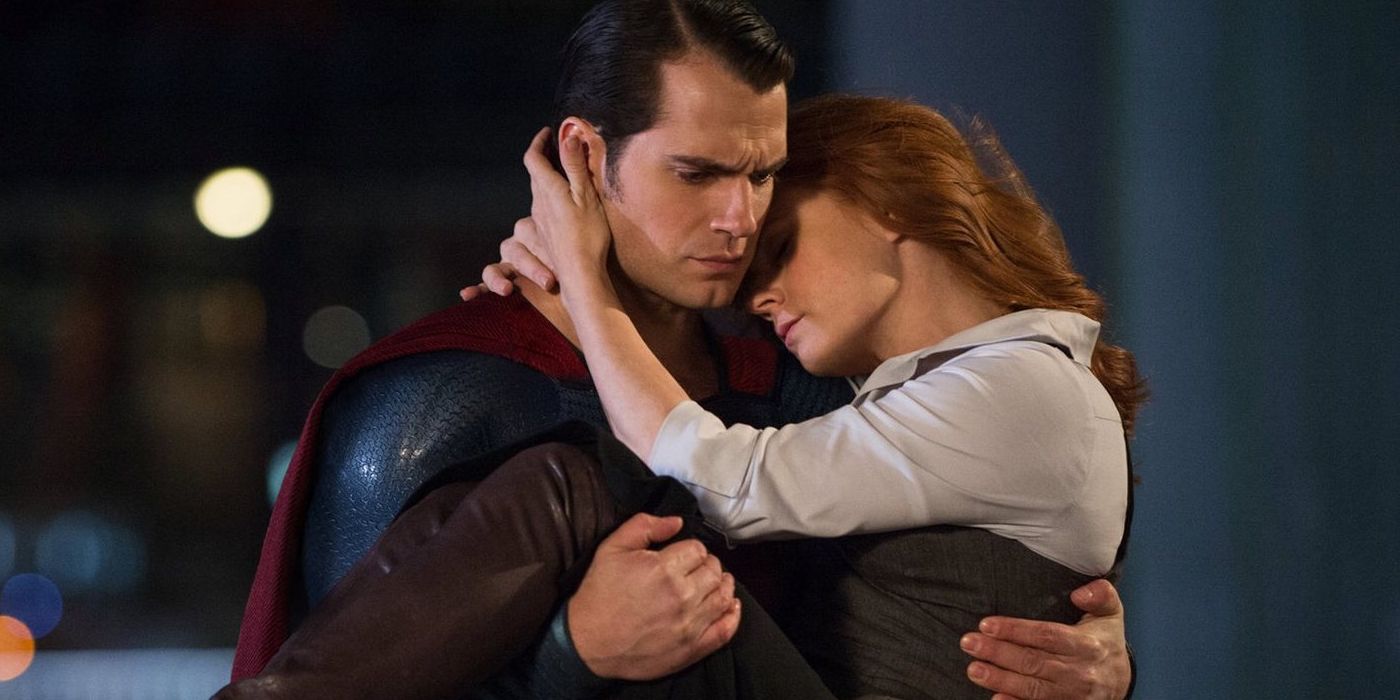
four – Plan
This next ii items are pretty direct forward, at to the lowest degree on the surface. Batman'south plan is to fight Superman, Superman doesn't take a plan up until five minutes before the fight, in which he decides he should convince him to help him rescue Martha, and and so Lex has a plan that would take around every bit many words equally nosotros are into this article to explain.
Detect that all of these parts converge towards the climax of the film, the fight between Bats and Supes, except one. Lex's cosmos of Doomsday, which appears rather forced simply so that Batman is not angry at Superman past the end of the film, and just so Superman tin can die at the end of the picture show (plot reason and plot reason). This is the problem with having a third graphic symbol be the mediator between the ii title characters, at the finish of the film you must give him some resolution.
This problem tin be summed up the following way: with Superman and Batman fighting, the premise is finalized, and thus, the story is over. Character-wise, Batman learns what he was supposed to learn and reveals character by making the choice of throwing the spear away, and Superman is consequent with the rest of the movie and is just Superman. And then, the motion-picture show must proceed because information technology nevertheless has some plot to unravel, just the story is over.
One could make the argument that actually Superman'south graphic symbol arc in the film is over when he sacrifices himself for the greater good, and thus finally proving to humanity that he is not here to destroy anybody simply those who represent a threat to the planet. Just hither is the thing – he doesn't learn that during the moving picture, he always felt that way.
Or at least we as an audience recollect that he always felt that way, because we know who Superman is, which is really fifty-fifty worse. The point is that there is no scene in this movie in which he realizes that he was wrong and he must cede himself. When Superman grabs the spear he doesn't make a character choice, he reacts to what is going on and decides what he must do.
I think this is a perfectly explanatory scene for the difference betwixt activeness and reaction: if that situation had happened at the first of the film, Superman would have made the aforementioned decision (as a graphic symbol, plot wise the writers demand to keep him alive to the terminate of the movie).
And so, to conclude this part, I think that this was the thought, that Superman's death was some kind of realization of his identify in the world, which is perfectly fine, but the execution of that idea is flawed.
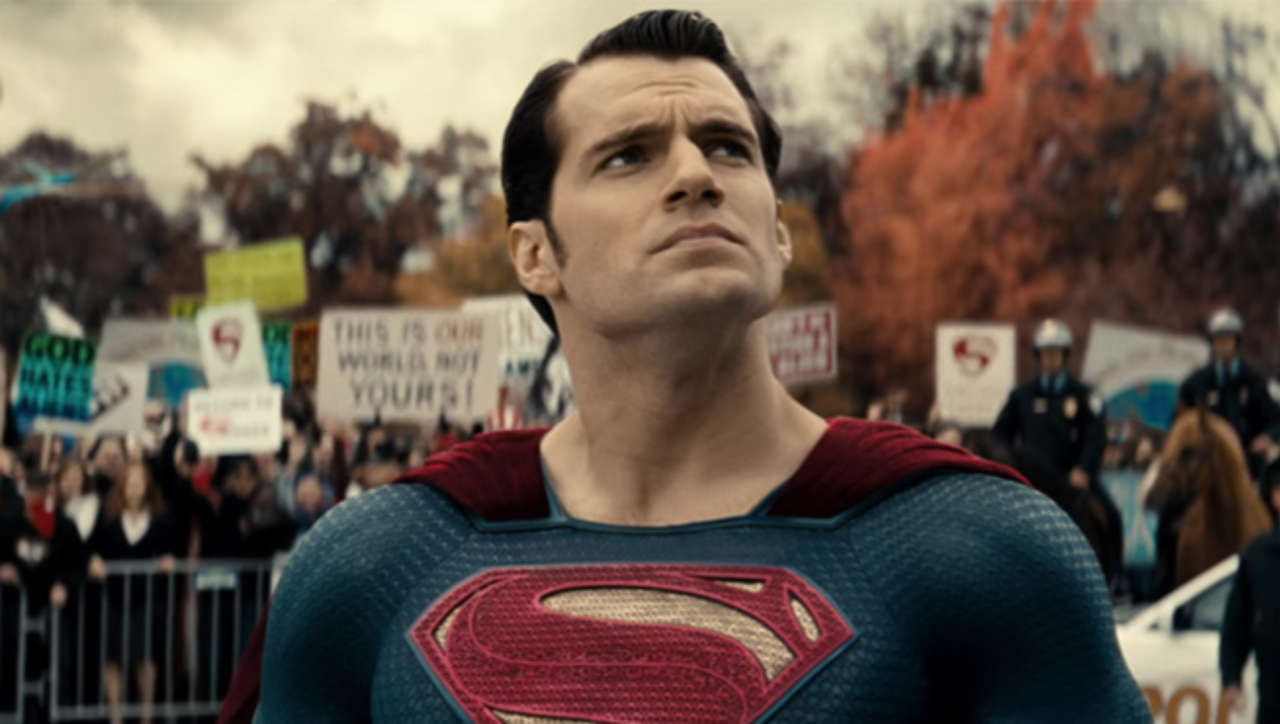
five – Battle
Well, in that location is not much to say here. It'southward in the championship of the motion-picture show.
6 – Self-revelation
Ok, so nosotros've been edifice up to this. The Martha scene. Here is Truby's definition: "The battle is an intense and painful experience for the hero. This crucible of battle causes the hero to have a major revelation about who he really is." Once again, it almost looks similar Truby wrote this part thinking of BvS, or the writers took his definition in the most literal style possible. But here is the nearly interesting function, the sentence he writes later on:
"Much of the quality of your story is based on the quality of this self-revelation."
I'll leave that in the air for a bit…
Ok, we're prepare. Let'south get to the negatives first. Yes, this scene is cheesy equally heck. It is even hilarious and perchance even embarrassing, cringe-worthy I would dare to say. I have seen this motion-picture show many times at habitation, and I am not gonna lie, I left the room a couple of them when this scene was coming up.
There'southward some other big negative for me, 1 that non a lot of people bring up when talking virtually this scene. So, the entire motion picture has been edifice upward to this – building upwardly to the fight, and this moment of self-revelation for Batman is the climax of the fight. And besides, the movie went out of his way to show the states that Bruce's mom was named Martha. And we also know that Martha is the proper noun of Clark'due south mother. Upwardly until this very scene, the moving picture did it perfectly in terms of gear up-up.
But here is where Zack Snyder definitely lost me, and this role to me even made me angry in the theater. Zack Snyder chose to replay all of those scenes, when Bruce goes to the crypt, when his father fell downwardly and called for Martha, etc.
Aaron Sorkin says in his Masterclass (the ad for it anyways): "The worst sin yous can commit is telling the audition something they already know." With this scene, Snyder went out of his way to hit us over the caput and tell us: hey dummies, if y'all didn't become it the first 15 times I told you Bruce'south mom is chosen Martha, and he actually cared for her, I am going to tell you again.
I hated it, not simply because of this, merely also because it is a stopping betoken for both the plot and even worse the story, in its climax. It besides shows some lack of confidence as a filmmaker, equally he is saying that maybe he didn't do it well plenty before that we wouldn't understand it by this betoken.
Merely every bit cringy as it is, I actually understand 100% what they were going for, if we ignore the replaying part. There is a reason why Zack Snyder chose to redo the death of the Waynes at the first of the movie and intercut it with the birth of The Batman. In this movie the fact that his parents died in that alley is the very key to understanding who he is in the story, coupled with his trip to Urban center while it was falling down because of Superman.
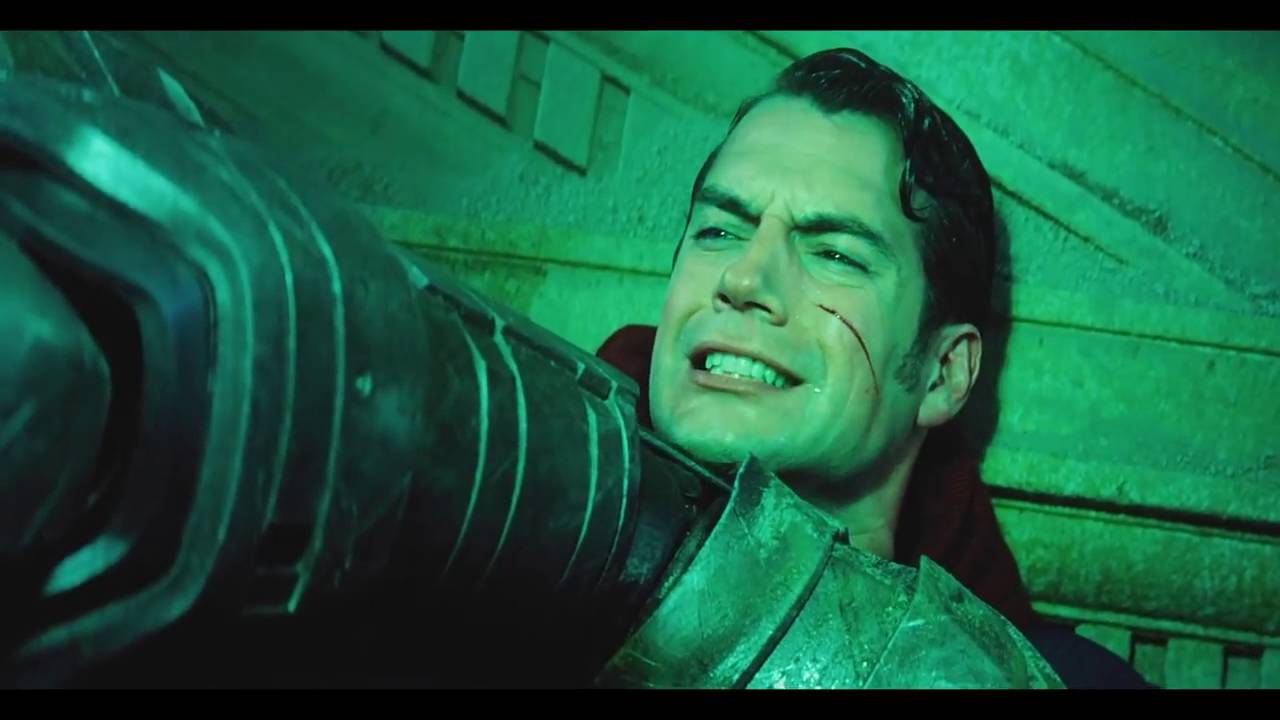
There is a deviation between Bruce Wayne and The Batman, the latter was created in that opening scene. Bruce Wayne represents the humanity of the character, which was present when Bruce spent time with his parents as a kid. When Joe Arctic kills his parents, that humanity went away, and The Batman was born.
The fact that Superman told him that his mother was named Martha took Bruce back to that alley, and past communicating that, he appealed to the Bruce Wayne that was left inside The Batman. And when told he had the opportunity to relieve a mother named Martha, Clark is basically giving Bruce the opportunity to practise what he merely wished he was capable of doing all those years ago, saving his mom.
Let's once again ignore the execution of the scene, and just focus on the thought backside information technology. I am sorry, but there is no other scene in this flick, dare I say in any other Batman movie that defines united states the inner conflict of the character any better. This pivotal scene is the perfect characterization for who Bruce Wayne is (or rather, is not) in that precise moment, while at the aforementioned time being the perfect characterization for who The Batman is in that precise moment.
This change justifies Batman'south changes afterward that scene to start listening to the Alfred inside of him instead of the Lex Luthor. It is at present perfectly justified every bit to why he would go salvage Martha, also. What is non justified is why he calls Superman his friend now, and why the two acted like they had reconciled their differences after he said the proper name Martha.
Sure, Batman is at present a ameliorate guy after he recoups some humanity within himself, but what if the final self-realization scene about Superman's true intentions came when he watched him sacrifice himself to kill Doomsday? That would have kept the story going, and not just the plot.
For hypotheticals sake, what if Bruce learns Superman's female parent's proper noun was Martha, just merely subsequently he has saved her? It could take been a tongue in cheek banter while the 2 bail and realize their moms have the aforementioned name. The reason this scene is mocked is because information technology puts the weight of the picture show on a minor particular, that their moms have the same proper noun, and over dramatizes it. On that notation, why would Superman say Martha in that moment, he'd say mom, to communicate its importance to him.
That scene encapsulates the picture show'due south principal problem: it has some bully ideas, but it lacks execution.
Finally, this scene answers dramatic question #half dozen: How does the graphic symbol change through those conflicts and how does the resolution affect them? Batman recuperates some humanity.
But what about Superman? What is his moment of self-revelation? If I had to pinpoint a moment of self-revelation for Superman in this movie, I would then accept to say it'due south the moment in which he decides to kill Doomsday, while running the gamble of suicide.
However, as nosotros've been discussing, I can't see the self-revelation part in that scene. I can venture what the writers were thinking (to have him finally realize what his function in this story is), but again, I tin can't think of any scene in which Superman struggled with that concept within this motion-picture show.
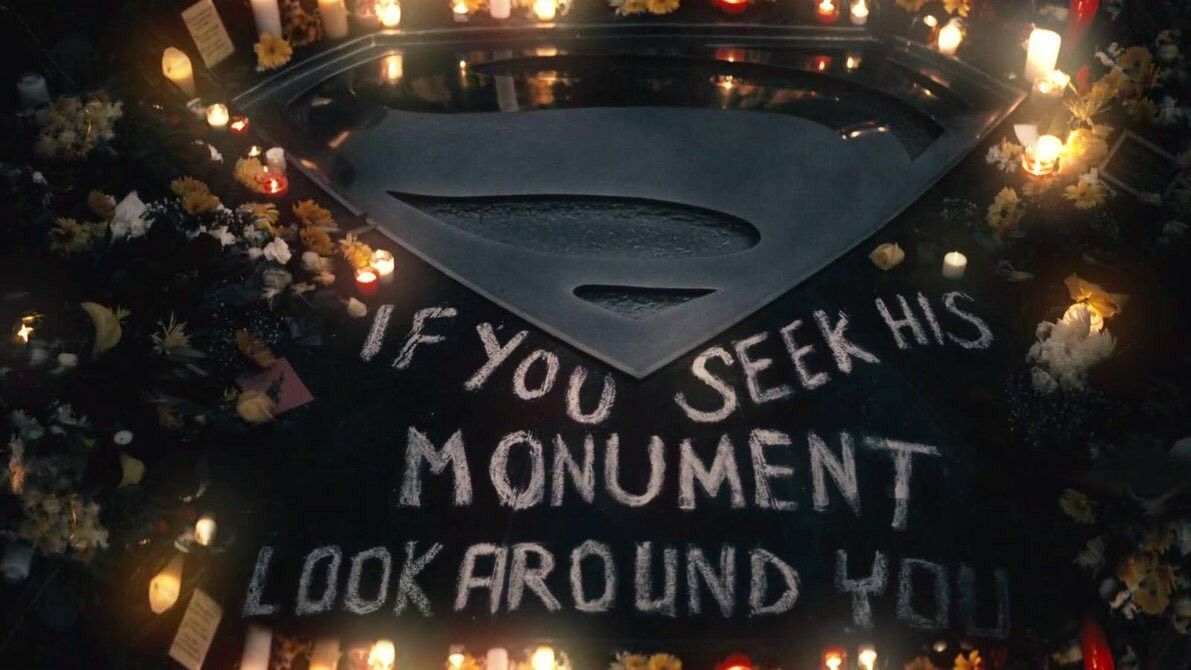
seven – New equilibrium
"At new equilibrium, everything is back to normal, and all want is gone. Except there is now one major difference. The hero has moved to a higher or lower level as a result of going through his crucible. A key and permanent alter has occurred in the hero."
Again, information technology'south pretty easy to identify. Later on Superman is dead, Batman completes his arc and his want is at present gone. Or at least that was the idea if they intended to make Superman'southward sacrifice his moment of cocky-revelation, which could have worked swell had they pulled information technology off.
Nosotros can finally respond dramatic question #7: What touch does that change accept on everyone else? Batman's modify resulted in saving Martha, and then he completes his arc when Superman also makes his alter and decides to sacrifice himself, killing Doomsday. At that signal, he realizes that new threats volition come, and he needs to class a squad.
And this also answers the question of why did they include Doomsday in the flick? Afterward Superman went to fight Batman, and after the fight was washed, the story was evidently over, but the plot kept moving. Why? Well, they needed a nuclear level threat to make Batman wonder what would happen if similar attacks occured. And so, the Justice League was prepare.
I am non opposed to the idea of introducing the Justice League in this movie, equally I said earlier, but they really should accept done it in a more organic fashion.
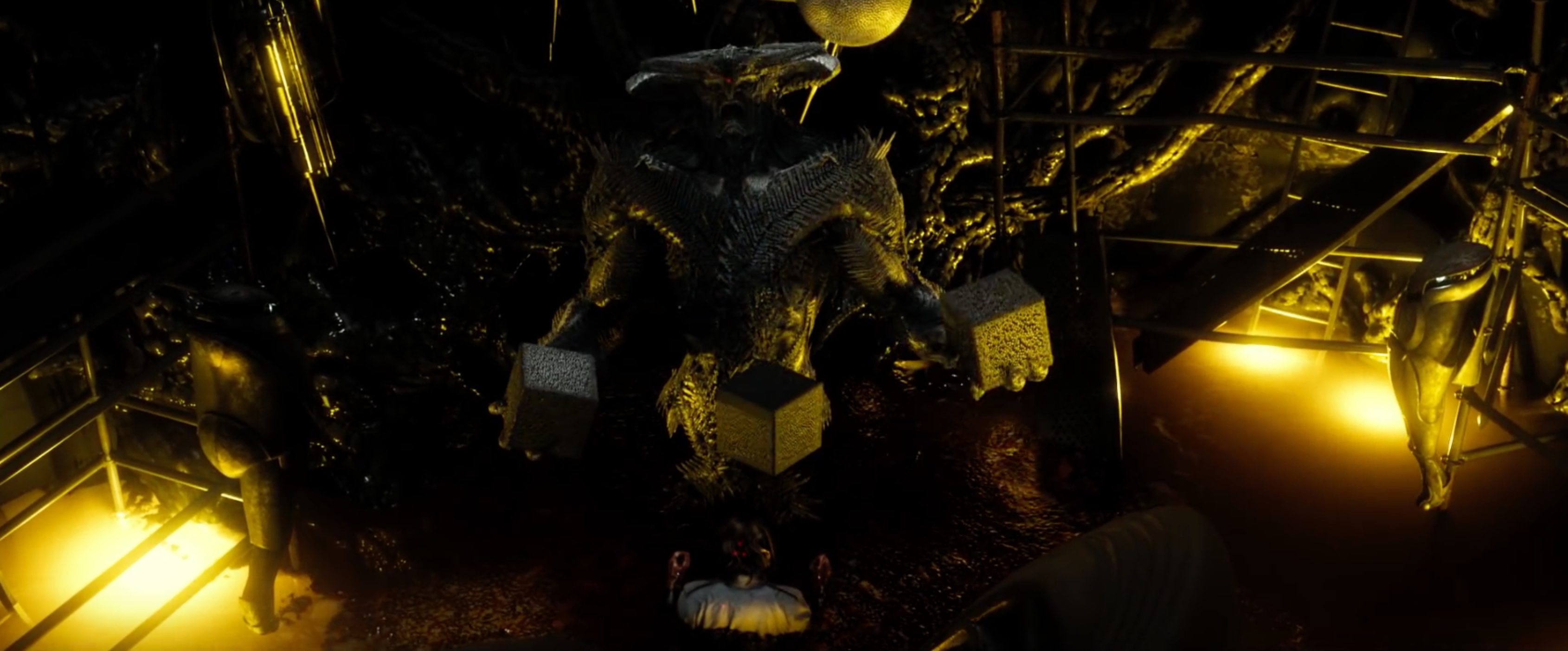
Discover that everything that happens in the movie that I didn't include in this long analysis was basically plot-related and not story-related. That would include Wonder Woman, Holly Hunter'due south character, Laurence Fishburn, and probably even Lois Lane, though she did accept some function to play in Superman'due south kind of characterization, and the writers probably decided to give her a bigger part with her own subplot just for the sake of making her relevant or having some female phonation in the film or something. Equally I said, she is not fifty-fifty relevant to the plot at the finish of the solar day.
So at present that we're washed, what did I desire to say with all of this? Well, it's pretty like shooting fish in a barrel actually. I think that this movie, much similar most movies, does not deserve a 140 character-length conversation, but rather a lengthy discussion on what works and what doesn't work, because I strongly believe in that location is plenty of both.
We've been mostly focused on story, and what worked in that location and what didn't work. If I had to put information technology in a sentence, it would exist this: in a moving picture called Batman V Superman, Batman was the main character, while Superman was there simply to serve the plot, and not the story. Simply the affair is, I don't have to say that, and instead I can write an unabridged essay on that sentence, and really dissect information technology to decease.
I believe these points we've covered are what make or break your picture. I have avoided for the most part talking almost performances (all great, except for the case of Jesse Eisenberg, in which I would say that it was interesting and deserving of another big editorial), the action (everybody talks well-nigh the warehouse scene, but the one I actually love is the broad-shot Knightmare sequence – besides, the main fight itself was pretty barbarous and great), or even the score (masterful).
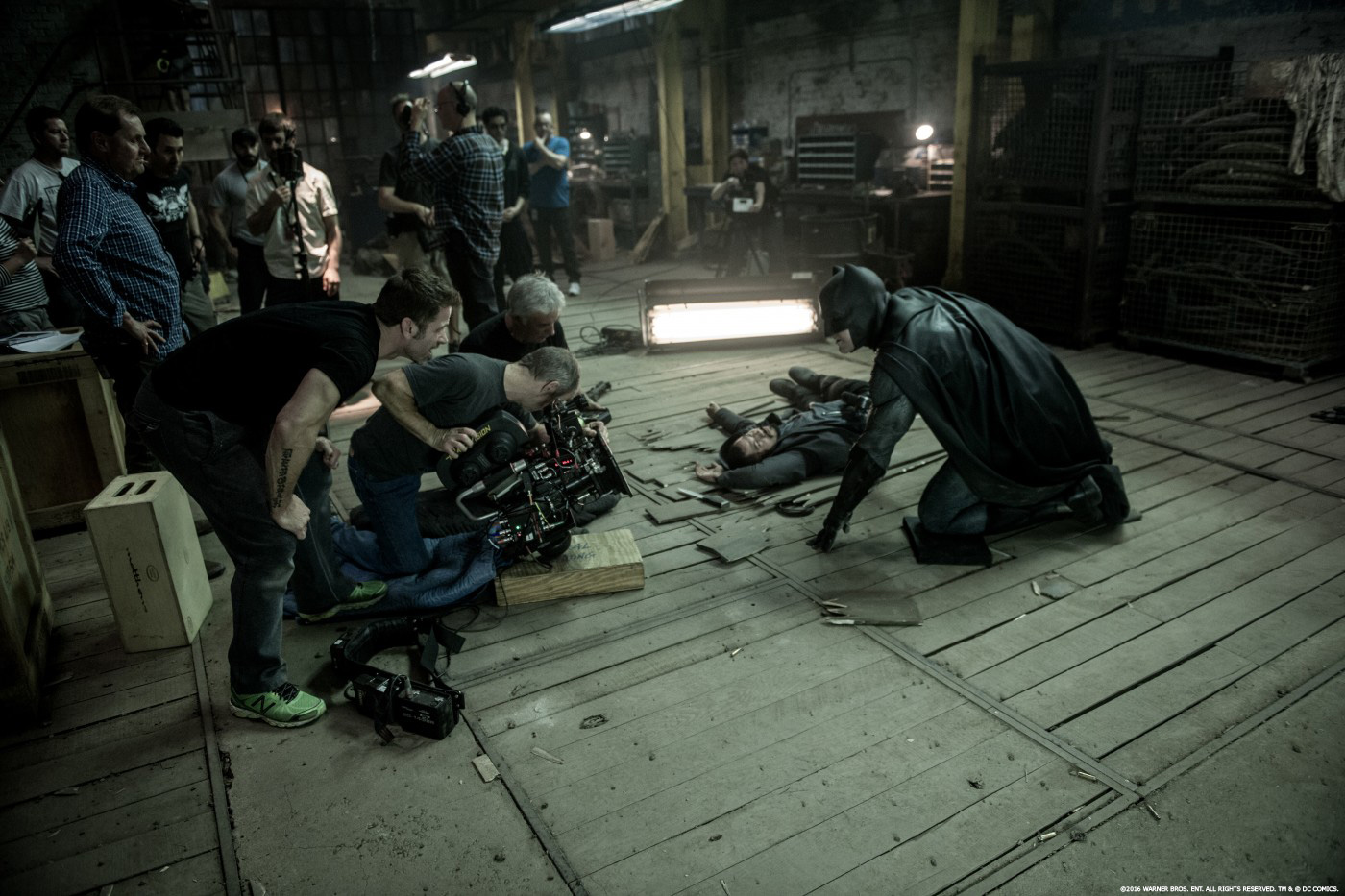
I would like to get out you with a question, but and then we can all hash out it in the intimacy of our own minds. Well-nigh of the people that didn't like this movie say so considering of the Martha scene, and nigh of the people that do similar this motion-picture show say so acknowledging that the Martha scene was pretty bad. Again, in that location are exceptions on either side, just at least people who put their hearts and souls into hating/loving this movie, have that reaction to that scene.
My question is actually regarding Truby'due south quote: does the climactic scene of the movie make/break it? I mean, let's get back to Casablanca, and say that Michael Curtiz dropped the ball on that scene in the aerodrome at the end. Would the motion-picture show notwithstanding be considered dandy, in spite of that scene, or would that ending totally ruin the motion-picture show?
Now let's have the Martha scene in BvS. What if they had pulled that 1 off? I mean, conserving their intentions behind that scene, only managing to get in less cheesy. Would the movie be regarded every bit pretty skillful? Or information technology all the same every bit flawed?
But even more than. What if they had fixed most of Superman'due south problems in this motion-picture show, and made him more relevant to the story? What if the movie was great up until that betoken, in which they delivered an awful climactic scene? Would that pause the movie?
I am talking about movies in full general now. I would similar to get to the bottom of what tin can make or break a pic. Consider Avengers: Endgame, for case. What if the get-go two hours of the picture were just awful, but we yet got the portals opening at the cease, with all that battle? Would it however exist regarded as highly as it is? Would that scene be enough to forgive the rest of the moving-picture show?
Miguel Fernández is a Castilian student that has movies as his second passion in life. His favorite movie of all time is The Lord of the Rings,but he is besides a huge Star Wars fan. However, fantasy movies are not his simply loving cup of tea, as authors like Scorsese, Fincher, Kubrick or Hitchcock accept been an obsession for him since he started to understand the linguistic communication of filmmaking. He is that guy who volition watch a black and white film, but because it is in black and white.
Source: https://www.movienewsnet.com/2020/04/14/batman-v-superman-an-in-depth-analysis-four-years-later/
0 Response to "Questions After Reading What We Talk About When We Talk About Batman and Superman"
Post a Comment